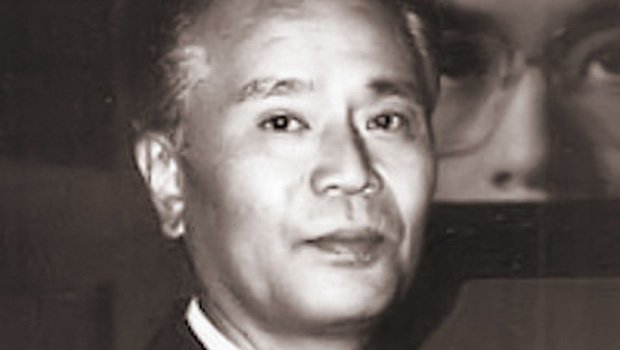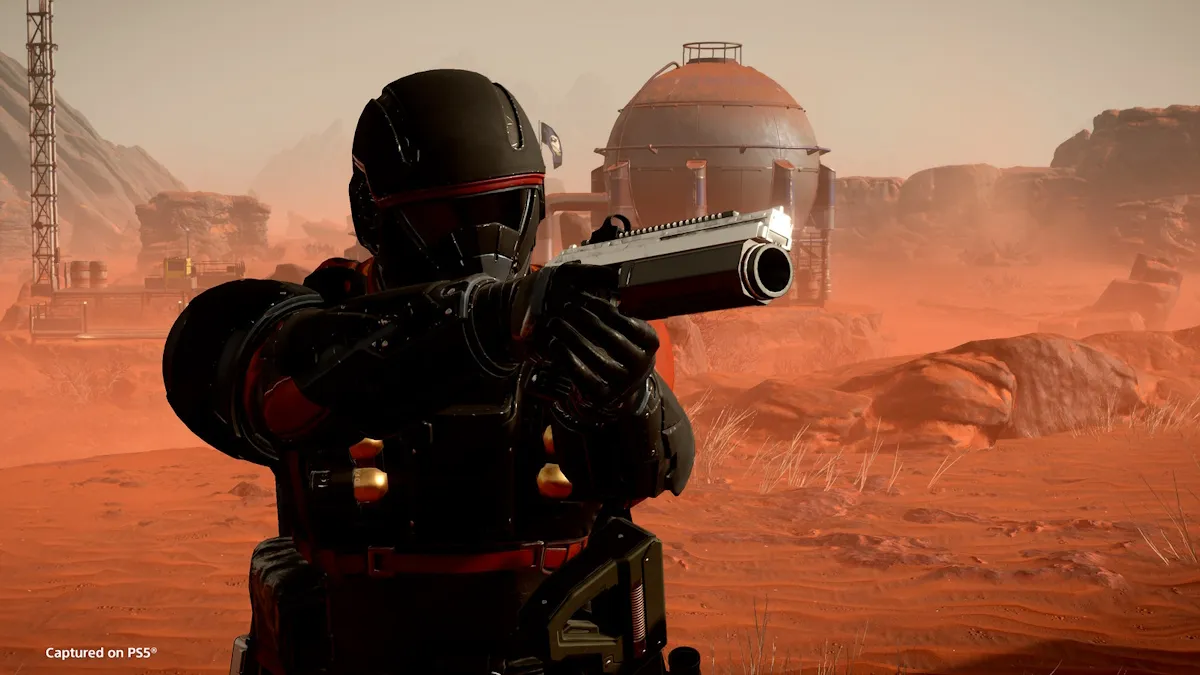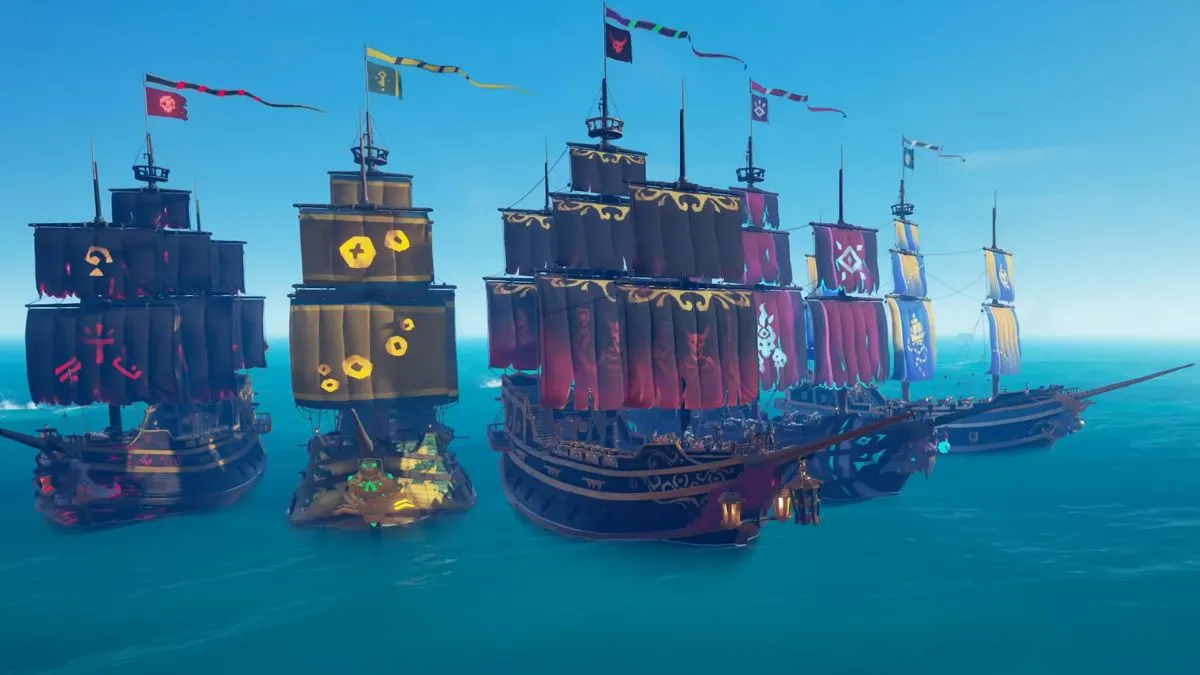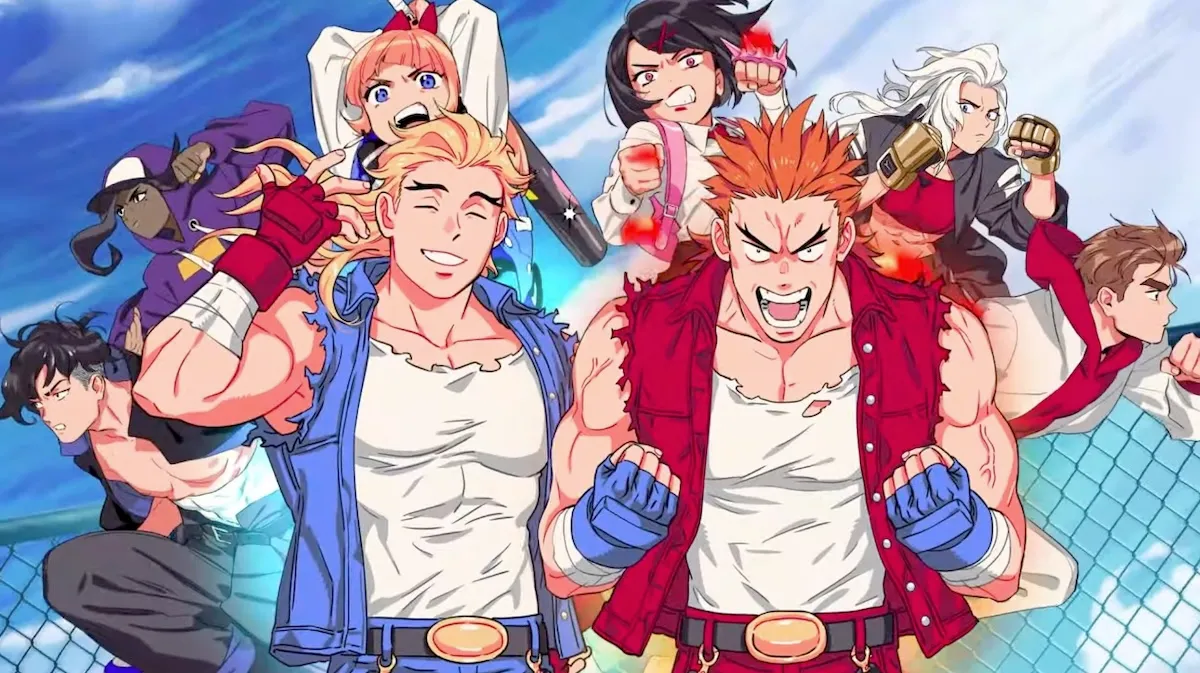[Dtoid community blogger locketheleisz shares a remembrance of his hero, Nintendo’s Gunpei Yokoi. It’s a long read, but seriously worth your time! Want to see your own words appear on the front page? Go write something! –Mr Andy Dixon]
The story of Gunpei Yokoi is, I think, the most interesting in Nintendo’s 123-year history. It is also one that brings into focus the philosophy at the core of this Hanufada card factory turned multinational consumer electronics manufacturer.
Lateral thinking with withered technology
This was the philosophical motto of Yokoi, who was hired by one of Nintendo’s Hanafuda card factories in 1965 as an assembly line maintenance man. In 1966, Hiroshi Yamauchi, the then-president of Nintendo, visited the factory where Yokoi worked and saw a toy that Yokoi had made for his own amusement: a mechanical arm that could extend and grab objects. Yamauchi was ecstatic about the toy, and ordered Yokoi to develop it for the upcoming holiday season. What resulted was the Nintendo Ultra Hand.

Nintendo Ultra Hand, 1966
Nearly 10 years earlier, in 1956, Yamauchi visited the headquarters of the then-largest manufacturer of playing cards, the United States Playing Card Company, which was to Yamauchi’s dismay a very small and unimpressive office. He took this as a sign of the capped potential of the playing card industry and began a mission to diversify Nintendo. In 1963, Yamauchi renamed Nintendo Playing Card Co. Ltd. to Nintendo Co., Ltd. and subsequently acquired various companies, including taxi companies, food companies, and a television network. Yamauchi’s crusade, however noble, seemed to be failing, with Nintendo’s stock plummeting in 1964 and the various acquired companies eventually disintegrating, until the Ultra Hand was released in 1966.
The success of the Ultra Hand was thus far the greatest of all Nintendo’s previous entries into the toy market, as well as the greatest of all its recent soul-searching and diversification projects, and for Yamauchi, it represented the future of the company. Yokoi was subsequently promoted from maintenance to a new “Nintendo Games” division as a product developer. For the next few years, Yokoi pumped out a variety of zany products like the Ultra Machine, a baseball-throwing machine, and Chiritorie, a remote-controlled vacuum cleaner. (Fun fact: Both these products were featured in WarioWare games as boss battles or micro-games; tons of Yokoi’s stuff is paid homage in Nintendo games, such as the recent Grill-Off with Ultra Hand!)
In 1971, Yamauchi read an article about Ball Trap shooting competitions that got his wheels spinning. He called Yokoi to discuss the potential of creating a simulation of these shooting competitions using a “light gun” product that Yokoi was working on, the Opto-Electronic Gun SP. Bowling had brief success as a fad in Japan in the 60s but had been almost completely replaced by Karaoke by the end of the decade. As a result, there were dozens of out-of-commission bowling alleys across Japan, which Yamauchi saw as a perfect venue for the Ball Trap simulations he was imagining. Yamauchi assembled a team to spearhead the project, consisting of Yokoi, Masayuki Uemura (who formerly worked in solar technology at Sharp Electronics Corp. and subsequently introduced the solar tech that would become the basis for all Nintendo “light gun” games), and Genyo Takeda (a new hire by Yokoi who would go on to be the creator of the Punch-Out!! and StarTropics franchises, and the lead hardware designer on the Wii much later). This project, dubbed the “Laser Clay Shooting System,” is lovingly considered by some to be the precursor to Duck Hunt, and it’s arguably Nintendo’s first entry into videogames.

The only image I could find of the Laser Clay Shooting System, 1973
The first Laser Clay Shooting System was installed in 1973 and was at first a wild success, prompting Yamauchi to buy out loads of former bowling alleys and hire Sonny Chiba for ads promoting the system. The systems were expensive, costing between ¥4 and ¥4.5 million to install, and consisted of a number of overhead projectors. Unfortunately, not a year later the 1973 OPEC-induced Oil Crisis rocked Japan’s economy and prompted multiple cancellations by clients who were seeking to install one of Nintendo’s simulations in their businesses. Nintendo was thrust into a $5 billion debt which took them seven years to fully pay off. However, despite the financial situation, the LCSS systems that were installed remained popular, and by 1974 a demand had risen for a smaller and cheaper version of the simulation. To be more specific, consumer demand was high but arcade orders were low, so Nintendo needed a cheap and resourceful approach to the project. Yokoi came up with idea of using a 16mm projector, a single “light gun” revolver, adapting it into a wild west setting that emphasized single player “draw” battles, and selling them in the form of an arcade cabinet. The result was Wild Gunman, released in 1974, which was later adapted into an NES “light gun” game.

Wild Gunman, 1974
This outside-the-box thinking became the signature of Yokoi. It was the reason Nintendo sought his guidance on projects; it embodied his personal philosophy as an engineer and later the philosophy of the company as a whole, as it was passed on from Yokoi, to his new hire Genyo Takeda, then down the line of subsequent new blood at Nintendo.
At the core of his philosophy was a dedication to both innovation and simplicity. He saw the implementation of “next generation” technologies as unnecessary to the creative engineer, even as a hindrance, because they required an engineer to “waste time” learning the new tech rather than thinking creatively. Yokoi instead saw an advantage in implementing technologies that were cheap, readily available and understood, and even on the brink of obscurity. These technologies allowed the creative thinker to cut directly to the paramount step of the development process: creation.
This notion eventually became “Lateral thinking with withered technology.” Though in 1974 Yokoi was yet to coin the catchy phrase which represented his philosophy, the spirit of the idea was already very much alive in Nintendo projects.
After the LCSS simulation and while Yokoi was developing Wild Gunman, Takeda was working on an arcade cabinet of his own, which Nintendo considers to be the company’s first official entry into videogames. EVR Race, released in 1975, was a six-player arcade game that displayed a horse race onscreen and required players to bet on the final outcome of the race. The game was unfortunately considered confusing among players and over-complicated among clients who were often unsure of how to properly maintain the machines when they malfunctioned. According to current Nintendo president Satoru Iwata, it was an invaluable lesson in the difficulty of distributing and maintaining arcade games.

EVR Race, 1975
More significantly, however, EVR Race represents Takeda’s first crack at embodying Yokoi’s creative philosophy. During the 70s, several electronics companies were competing to become the standard of the video recording/playback medium, much like the short-lived war between Blu-ray and HD-DVD. By the middle of the decade, VHS and Betamax had emerged as the two final combatants, and as a result, there was a lot of leftover non-VHS and non-Betamax video tech that was considered dead on arrival. Nintendo acquired some of this tech for Takeda’s “arcade racer” project, namely a protocol called EVR, or Electronic Video Recording, which was used to display the horse races onscreen. In line with the Yokoi philosophy, Takeda avoided manufacturers who were winning the video battle and chose a “losing” and dated protocol (EVR was introduced in the late 60s) precisely because it was losing and was subsequently cheap and abundant. A year earlier, when the fate of the video medium was still up in the air and video tech was still cutting edge and expensive, Nintendo kept their distance and stuck to film projection.
After dipping the colloquial toe in the early and mid 70s, Nintendo spent the latter half of the decade plunging headfirst into the videogame industry. In 1974, they acquired the right to distribute the Magnavox Odyssey videogame console in Japan, which catalyzed Nintendo’s ambition to produce their own home console. In the mid to late 70s, Gunpei Yokoi began production on the Color TV Game 6, a home console featuring six “variations” on a single game called Light Tennis, which was essentially Pong by another name.

The original Color TV Game 6, 1977
Production of the Color TV Game 6 was carried out somewhat carefully, with only one million units produced. After the system was released in 1977 and all units subsequently sold out, Nintendo began production on a series of variations on the Color TV Game 6. It was also around this time that Nintendo hired a young Shigeru Miyamoto, who was assigned to work under Yokoi on the Color TV Game project.

Color TV Game Block Breaker, 1979, displaying Miyamoto’s first design work at Nintendo
Contrary to popular belief, Miyamoto’s first design work at Nintendo was not Donkey Kong, his most famous early career project, but actually the physical enclosures of the Color TV Game Block Breaker console, released in 1979. In fact, between 1979 and the development of Donkey Kong in 1981, Miyamoto would cut his teeth on a handful of lost-in-time Nintendo games; among them, he created the art for Takeda’s second arcade game Sheriff in 1979 and did his first game design work on Radar Scope in 1980.
Radar Scope was a huge success in Japan, prompting the then-president of the newly formed Nintendo of America, Minoru Arakawa, to place a large order of cabinets for distribution overseas. By the time America had received the cabinets, the popularity of the game had mostly died out, setting up Arakawa and the new Nintendo of America for financial disaster. However unlucky, Arakawa was fortunate enough to have married Yamauchi’s daughter, so the Nintendo president swooped in to save his son-in-law, proposing that surplus Radar Scope cabinets be converted into a new game, which was yet to be developed. Yamauchi gave this task to Miyamoto, who was familiar with the Radar Scope hardware, but also felt that young Miyamoto required guidance, so he assigned his most trusted asset of the Nintendo game’s division to train Miyamoto in the intricacies of game design and supervise the project. That new game would become Donkey Kong, and that supervisor was, of course, Gunpei Yokoi.
Yokoi played a somewhat backstage role in Miyamoto’s early works. Donkey Kong was born because Nintendo was pursuing a license to develop a Popeye arcade game, which fell through, leaving Miyamoto the challenge of envisioning a new “hero/damsel in distress/villain” love triangle (originally Popeye, Olive Oil, and Bluto), which ultimately would become Jumpman (Mario), “The Lady” (Pauline), and Donkey Kong. Yokoi riffed with Miyamoto on the how the game would play — Miyamoto originally wanted all three characters to be playable, with unique characteristics, but Yokoi deemed this overcomplicated. Yokoi suggested using catapults to propel Jumpman towards “The Lady,” but this proved too difficult to program; Miyamoto came up with the ladders and slopes as an alternative. After Donkey Kong, the two designers worked together on Mario Bros., the arcade game (not to be confused with the classic NES/Famicom game Super Mario Bros.), where several attributes of Mario as we know and love him were introduced. For example, in Donkey Kong, Jumpman dies if he falls from a certain height; Yokoi suggested allowing Mario to safely fall from any height. It was also Yokoi’s idea to allow Mario to attack enemies from below, as in breaking a block that an enemy is walking on.

Radar Scope gameplay, 1980
Let’s backtrack a couple years to 1979, a year in which history produced what I consider to be one of the most important and defining moments in Nintendo’s background. It was during a mundane train commute when Yokoi noticed a bored businessman, idling time by mashing buttons on a pocket calculator. He watched this man in fascination, as the future of his career as a designer fatefully clicked into place. Yokoi was aware that the calculator war between Sharp and Casio was currently raging, resulting in a market flooded with crystal displays, semi-conductors, and button-cell batteries, and upon witnessing this bored commuter in action, he realized the potential to convert these components, and this observed boredom, into product. This moment represents the birth of the Game & Watch handheld systems and, according to Yokoi, the genesis of his “Lateral Thinking” philosophy. While he had employed the creative thinking behind the philosophy in the past, from this moment on, it would become the mantra by which all his creations would come into fruition.

The first Game & Watch release, aptly entitled Ball, 1980
Why exactly is this moment so significant, not just for Yokoi or for the Game & Watch but for Nintendo as a whole? For me, this moment brings a context to all of Nintendo’s historically oddball decisions. As a kid, I always had love for Nintendo above all other videogame license holders and distributors, but I was often left feeling like “Nintendo works in mysterious ways” due to choices that, at the time, were seemingly paradoxical to progress. An obvious example is the choice to stick with cartridges during the Nintendo 64 console generation. However, before Nintendo would adopt this as a company-wide modus operandi, Yokoi would first have to prove its worth as both a business and creative philosophy. The “Game & Watch moment” represents the first step in this process.
Crucial to understanding Yokoi’s significance at Nintendo is the understanding of how Nintendo has always managed the research and development of their products. Today, Nintendo’s creative end is divided into several small groups, each responsible for a particular franchise or a group of franchises. For example, Nintendo Entertainment Analysis and Development Group No. 3, managed by Eiji Aonuma, is responsible for entries into the Zelda franchise. I think the knowledge of this infrastructure absolves a lot of the “mystery” surrounding Nintendo’s software. I doubt many would be surprised to learn that the team in charge of Nintendo’s Mii lineup (Wii Sports, Nintendo Land, etc.) is the same team in charge of Animal Crossing, or that the team in charge of the Rhythm Heaven franchise also created WarioWare, but these facts are rarely referenced. In the case of Super Mario Galaxy, the first installment was positively received, but the second installment was revered. What happened there? Super Mario Galaxy changed hands from Tokyo Development Group No. 1 (developers of Donkey Kong Jungle Beat) to Tokyo Development Group No. 2, which would go on to develop Super Mario 3D Land.
The oldest of these groups, Nintendo Research & Development 1, was founded in 1970 and headed by Gunpei Yokoi. Looking at the track record of this group is perhaps the best way to understand the massive impact that Yokoi’s influence had over the direction and character of Nintendo as a games company. Aside from the aforementioned Sheriff, Radar Scope, and Donkey Kong arcade games, the group was responsible for several of Nintendo’s more iconic properties, including Kid Icarus, Metroid, Balloon Fight, Dr. Mario, Duck Hunt, Excitebike, Ice Climber, Tetris, Wrecking Crew, Mario Paint, Super Metroid, the Game Boy, nearly every classic first-party Game Boy game that exists, and of course, the Game & Watch handhelds.
That first Game & Watch handheld was Ball, released in 1980, and was a moderate success, generating over 250,000 sales and prompting the development and release of several more Game & Watch handhelds. By the series’ third installment Vermin, also in 1980, the handhelds were averaging between 250,000 and 1,000,000 sales per release. Thanks to Yokoi’s resourceful thinking, the handhelds were cheap and easy to produce. By 1991, Nintendo had produced 60 different Game & Watch titles. Among these is 1982’s Donkey Kong handheld, which featured a newly developed control interface, designed by Yokoi, which Nintendo was calling the “+ Control Pad.”
Yes, Gunpei Yokoi designed the fucking D-pad.

Game & Watch Donkey Kong, 1982
The D-pad became the standard control interface for most Game & Watch handhelds that were subsequently released. At one point, Nintendo even began developing a small wired controller fixed with a D-pad to be used with future Game & Watch games. However, Nintendo realized the potential for this interface to be applied to home console gaming and repurposed the tech for their upcoming Famicom systems. The Famicom was released in 1983 in Japan and became the first home console to be fitted with a wired D-pad controller.
Jumping forward to 1989, we arrive in the midst of “Nintendo Fever.” The NES had been released internationally four years earlier, selling 60 million units in two years, and conveniently swooping in alongside Sega’s Master System, released internationally in 1987, to steal away the gaming population, after the videogame crash of 1983. (Side note: the E.T. debacle, which involved thousands of unsold copies of Atari’s E.T. the Extra-Terrestrial being dumped into a landfill, is not an urban legend, as has been suggested by some Internet people. I know Fred Simon, who was vice president of Atari at the time, and he laughed his ass off when I told him that some people believed the E.T. story to be a myth.) Nintendo was a shoe-in for king of the industry at the time — Sega was yet to produce a Sonic game and Nintendo had already released installments in several of their iconic franchises, like Super Mario Bros., The Legend of Zelda, and Metroid.
As the decade came to a close, Nintendo, Sega, and Atari were all hard at work on handheld gaming systems that would blow the lid off the Game & Watch series and even offer up experiences that could rival what players were getting at home. Yokoi was the lead hardware designer on Nintendo’s Game Boy project, and it was his resolve and vision during this development process that would drive Nintendo to victory in the handheld gaming race. While Atari’s Lynx and Sega’s Game Gear sported full color displays and backlit screens, Yokoi maintained his resourceful approach for the Game Boy and stuck with a monochromatic display that was lower cost and easier to produce. In the PR war that ensued, Sega and Atari publicly poked fun at Nintendo for their “low-tech” handheld and ultimately incited some worry among Nintendo execs, who pressured Yokoi on his decisions. Yokoi remained committed to the design, citing energy consumption and pricing as the main reasons the Game Boy would prevail over its competitors.
Ultimately, Yokoi’s judgement proved right; the Lynx and Game Gear released for about $100 more than the Game Boy, consumed six AA batteries compared to the Game Boy’s four, and provided significantly less playtime than the Game Boy — about six hours less. Subsequently, and for all these reasons, the Game Boy dominated the market.

An awesome meme featuring Yokoi and the Game Boy, 1989
The unwillingness to bend on design is an attitude that has afforded Nintendo with many of its greatest victories. The Legend of Zelda was designed concurrently with Super Mario Bros. and by the same team, formerly Nintendo Creative Department. The reason behind the simultaneous design was that each game provided an outlet for the different design ideas Miyamoto was working on. Super Mario Bros. was to be a linear game, full of scripted action and a highly controlled player experience, whereas The Legend of Zelda empowered players with choice and exploration and represented Miyamoto’s ambition to push the limits of a “game world.” During the testing phase of The Legend of Zelda, many testers complained that the game was confusing and that they didn’t “know what to do” or “where to go.” This worried Nintendo execs, who pressured Miyamoto to add more instructions to the game or limit the freedom of the player, not to constrict but to guide them. Miyamoto saw this potential constriction as a compromise to the core concept of the game and refused, based on the grounds that “players would talk” and figure the game out as a community.
To me, Miyamoto’s dedication here represents not only a great victory for Nintendo but a massive landmark in the history of videogames. Still, this same unwillingness to bend, however signature of Nintendo, has also been the cause of a handful of failures for the company. Their refusal to adopt “cutting-edge” CD tech during the late 90s was the reason Sony gained a financial advantage and absorbed a large part of Nintendo’s audience. Similarly, their refusal to adopt Sony and Microsoft’s model of losing money on hardware production and gaining it back on game licensing was the reason for the lackluster GameCube and subsequent financial fallout. However, this unchanged attitude also gained them great success with the Wii, which was nearly identical to the GameCube in terms of processing, largely inferior to its competitors, but was cheap and easy to produce and added the “lateral” element of motion control.
Understanding the role of Gunpei Yokoi in the history of Nintendo has given me a new appreciation of everyone’s favorite “OMG WHAT ARE YOU GUYS DOING!?” games company. We love Nintendo, yet a lot of us are confused by the moves they make. Well, if you’re confused as to why your 3DS has an absolute shit camera or why Nintendo has taken so long to embrace fully featured online services, look no further than Gunpei Yokoi, creator of WTF things like the Virtual Boy and the NES R.O.B., and also the mastermind of larger-than-life hardware designs like the D-pad and the Game Boy. Oddly enough, it turns out that these are the same kind of weirdo moves that brought your favorite games and childhood memories into fruition. According to today’s Nintendo president Iwata, the “lateral thinking” philosophy “is still part of Nintendo as it has been passed on to the disciples of Yokoi, such as Miyamoto, and it continues to show itself in Nintendo’s current use of technology.”
Sadly, the Gunpei Yokoi story ends about a decade after the Game Boy was released, when he was struck by a car in 1997. Before his untimely death, he made tons more contributions to Nintendo, which I encourage you to research and discover. I think you’ll be surprised to find how large a part was played in your childhood by a man so few of us even knew existed. Every time I crack a 40 oz (Pkshhhhhhhh! That’s the sound of the 40 oz opening!), I pour out a little liquor for my lost heroes; among them is Gunpei Yokoi, the mofo-ing godfather of videogame innovation.
RIP




